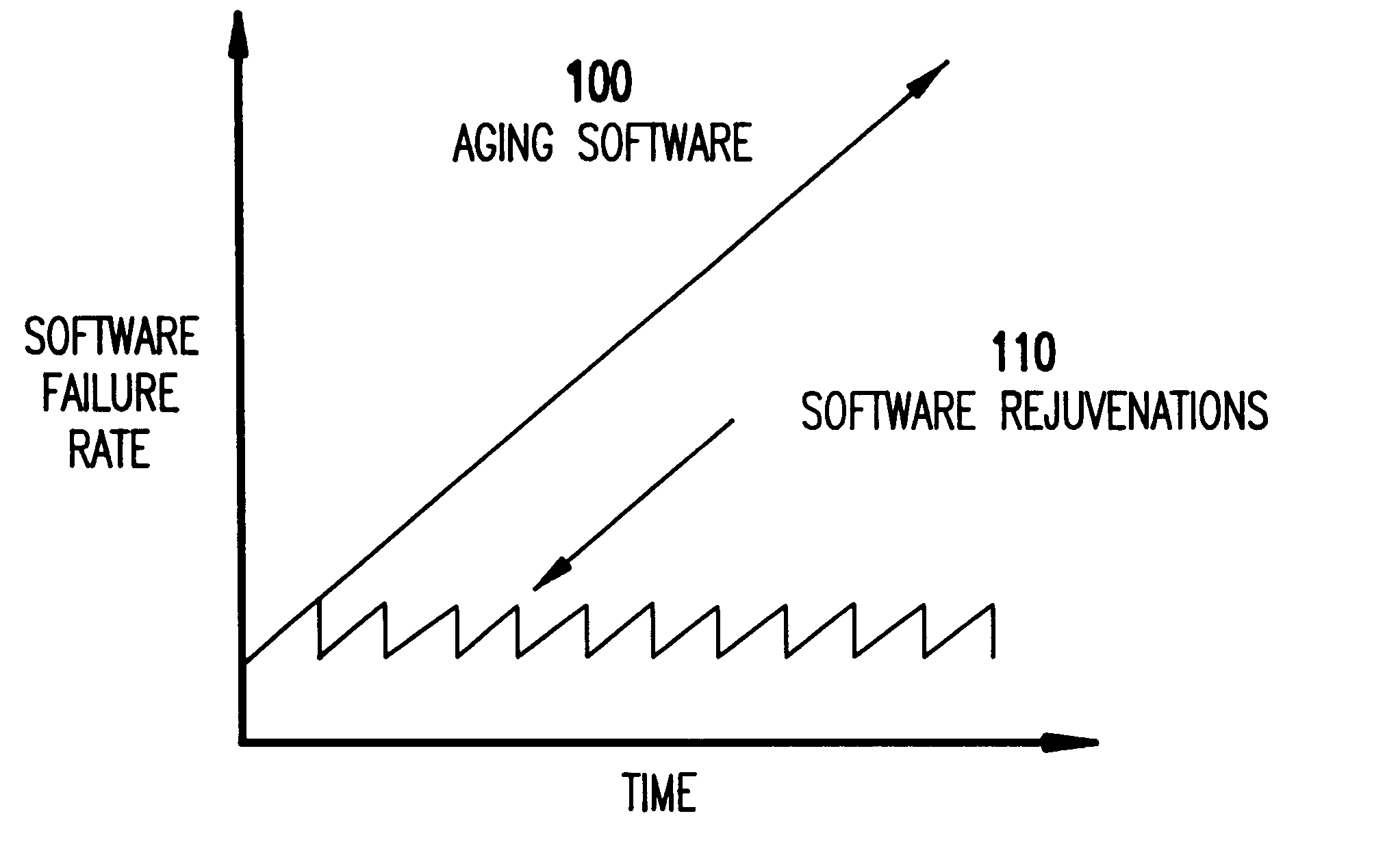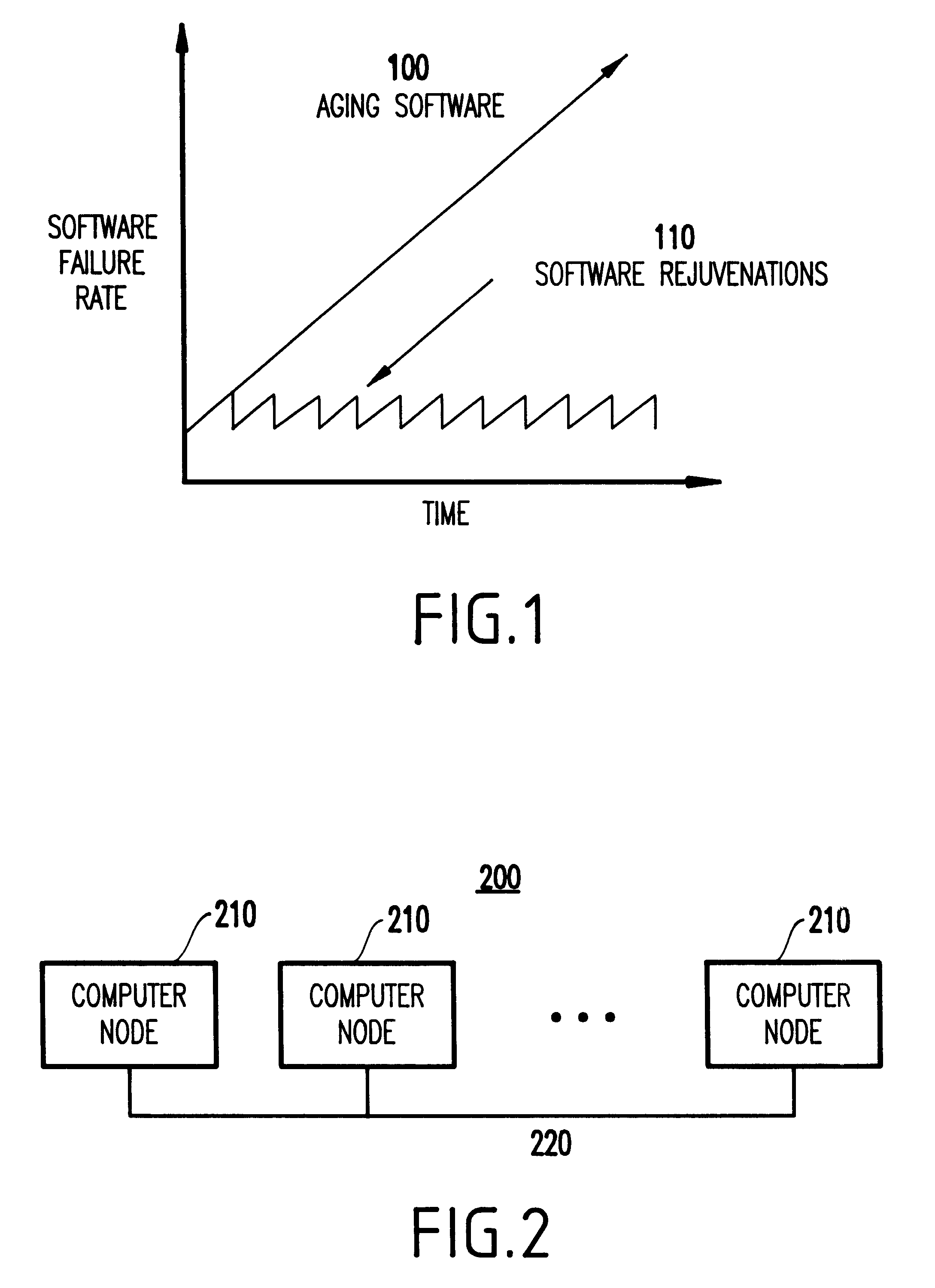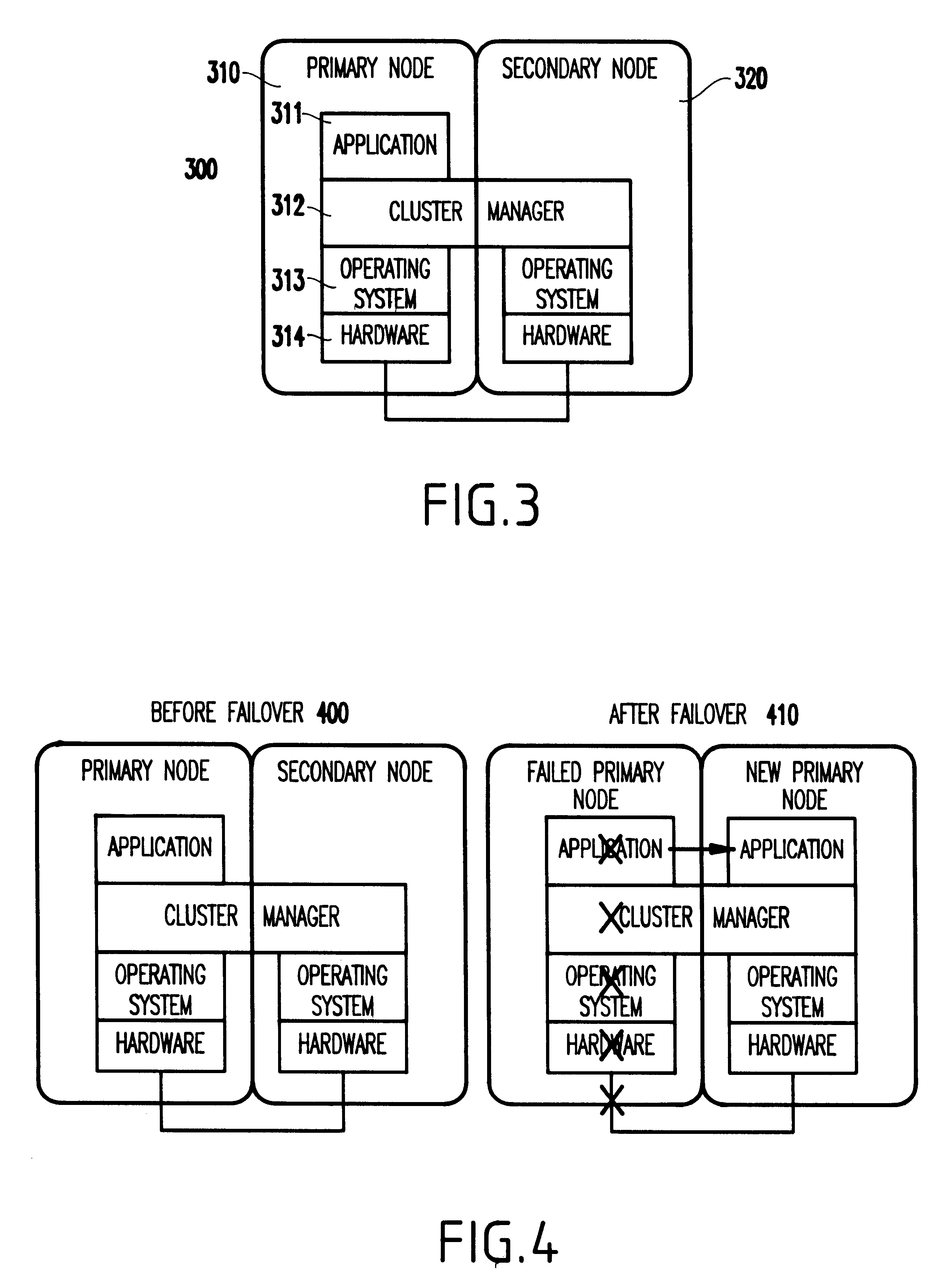Method and system for transparent symptom-based selective software rejuvenation
a software rejuvenation and transparent technology, applied in the field of software rejuvenation, can solve the problems of increasing the probability of system outage, software executing in computer and networking systems can exhibit a behavior, and the failure rate of software executing in the system increases over tim
- Summary
- Abstract
- Description
- Claims
- Application Information
AI Technical Summary
Problems solved by technology
Method used
Image
Examples
Embodiment Construction
Referring now to the drawings, and more particularly to FIGS. 2-19, there is shown a preferred embodiment of the method and structure according to the present invention.
Referring to FIGS. 2-12, an embodiment of the present invention will be described below.
First, prior to describing the preferred embodiment in detail, it is noted that although transparent software rejuvenation according to the present invention works well and provides benefits within the environment of a single stand-alone computer node, preferably the invention is implemented in the context of a cluster environment. Thus, as described below, the preferred embodiment will be described below within the context of a cluster environment, as shown in FIG. 2.
For the purposes of the present invention (and as shown in FIG. 2), a cluster 200 can be regarded as a set of computer nodes 210, each of which contains an independent copy of the operating system, that are connected via a network 220 interconnect.
Any node 210 in the...
PUM
 Login to View More
Login to View More Abstract
Description
Claims
Application Information
 Login to View More
Login to View More - R&D
- Intellectual Property
- Life Sciences
- Materials
- Tech Scout
- Unparalleled Data Quality
- Higher Quality Content
- 60% Fewer Hallucinations
Browse by: Latest US Patents, China's latest patents, Technical Efficacy Thesaurus, Application Domain, Technology Topic, Popular Technical Reports.
© 2025 PatSnap. All rights reserved.Legal|Privacy policy|Modern Slavery Act Transparency Statement|Sitemap|About US| Contact US: help@patsnap.com



